Bergen-Belsen Memorial Site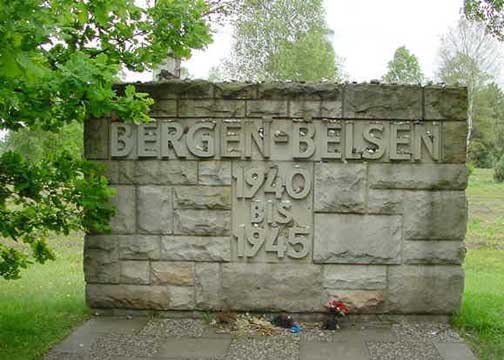 Stone sign at the entrance to the Memorial Site denotes the dates that this area was used as a prison camp, first for Prisoners of War in 1940, then for exchange prisoners in 1943 and for sick prisoners in 1944. On 2 December 1944, Bergen-Belsen became a concentration camp. 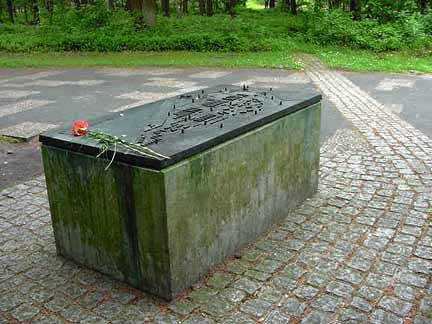 A map of the camp, on top of a stone box, is located close to the entrance. The line of cobblestones across the path marks the boundary line of the former concentration camp. 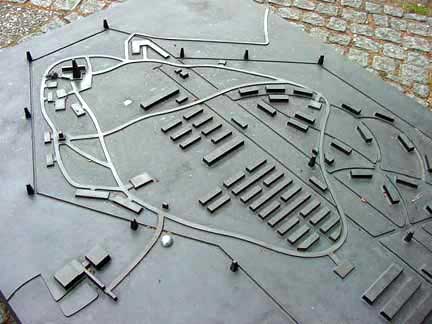 Map at the entrance shows the area which has been converted into a Memorial site. In the left hand corner is the Document Center and Museum with a wall between them. A path leads to the area of the former camp. The path to the left leads to the obelisk, shown at the top of the map on the left. Take the path to the right at the entrance stone to visit the place where the prisoners had to stand for roll call every morning and evening.  This section of the map on top of the box shows the POW camp and the SS Army Training Center which was right next to the camp for Jewish exchange prisoners. 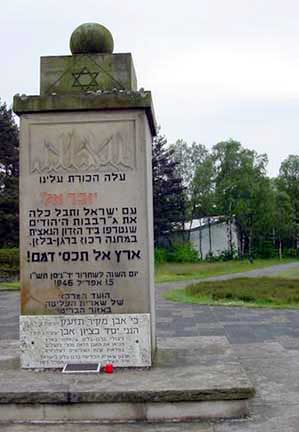 Jewish Monument erected on the first anniversary of the camp liberation, 15 April 1946. In the background is a modern building where visitors can spend time quietly reflecting on the tragedy which occurred in this spot. 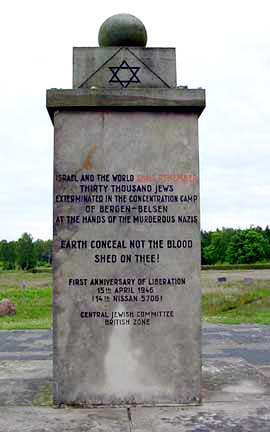 The back side of the Jewish Monument has an English translation of the words on the front: "Israel and the world shall remember thirty thousand Jews exterminated in the concentration camp of Bergen-Belsen at the hands of the murderous Nazis. EARTH CONCEAL NOT THE BLOOD SHED ON THEE! First anniversary of Liberation 15th April 1946 Central Jewish Committee Brtish Zone" 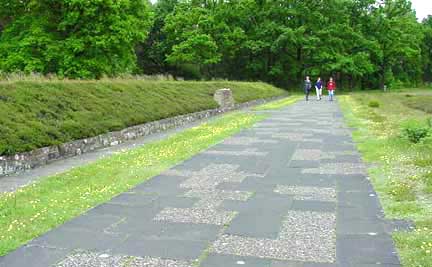 All of the former barracks in the camp were burned to the ground by the British liberators in April 1945 in order to stop the tyhus epidemic. The bodies of the typhus victims were buried in mass graves like the one shown on the left in the photo above. Anne Frank's tombstoneBack to Bergen-Belsen home pageHome |